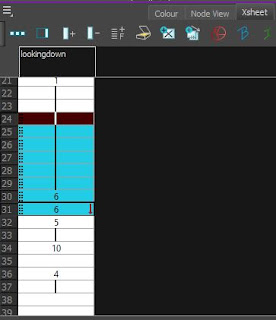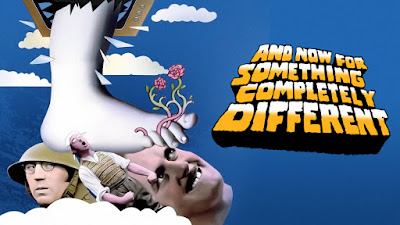Classical hollywood is the period from 1920s-1950s aka the golden age of hollywood. This refers to the style, production values and distribution of the films made in studios at this time. The big 5 Metro Golden Mayer, Paramount, Warner Bros, RKO Radio, 20th century fox. The little 3 Universal, Columbia, United Artists. The studio system was a big part of the success of classic hollywood. This allowed the big studios to have control of their movies. This structure is called Vertical integration because they control the supply chain from the top.
MPPDA
The major studios consolidated their powers by establishing a trade body called Motion Picture Producers and Distribution Association in 1922. Its functions were to encourage cooperation within studios, to lobby overseas governments that threatened hollywood imports.
Block Booking
A studio would sell a years worth of films to theatres in packages. There would be one good A-budget and the rest lower quality, lower budgeted movies. The big 5 studios owned their own studios that were exempt from this practice. In 1948 in the USA vs Paramount, the decision outlawed block booking and forced the studios to sell their theatre chains.
The Hays Code
In the late 1920s, movies were popular and profitable, but not respectable. MPPDA hired Will Hays to put in a regulatory practice called the Motion Picture Production Code of 1930, know as the Hays Code. This code listed a bunch of subjects that films couldnt portray. This code remained in place until late 1960s, the most important being sex and crime.
The Star System
Studios "owned" their stars. The stars were employees, and bound to them by contract. The studio would create a public appearance for the star, regardless of what they might actually be like. Contracts often had morality clauses to try and rein in the stars. This frustrated the stars as they had no creative freedom.
Common Film Techniques
Narrative structure - clearly structured with obvious beginning middle and ends with a definite resolution.
continuity editing - hides any cuts as much as possible
establishing shot - A long shot at the start to show the location of the scene/transition between scenes shot/reverse shot - flipping the camera, usually in a convo between two ppl
180 degree rule - Camera stays within 180 degrees to maintain smooth shot transitions
30 degree rule - camera should move at least 30 between successive shots to avoid jump cutting match on action - linking movements between shots to hide the cut
eyeline match - Two people looking at each other, one in first shot, one in second.
Online Film Terms dictionaries https://www.nyfa.edu/student-resources/glossary/
https://filmglossary.ccnmtl.columbia.edu/term/
Golden age of Animation
1927 the sound feature film The Jazz Singer was a large success. This helped inspire Walt Disney in 1928 to turn Steamboat Willie from an unfinished silent short into a synchro sound film, the success meant that Disneys future animations all had sound. This was the introduction of Mickey Mouse to the world.
In 1929, The Skeleton Dance was the first of the Silly Symphonies that Disney released to help cheer up the people during the depression. The Three Little Pigs in 1933 was the most successsful of these symphonies, winning an oscar for best short film. 1934 was The Wise Little Hen, in which Donald Duck was introduced, overtaking Mickey as Disneys most popular character. The Old Mill in 1936 was disneys foray into realistic animation, using natural sounding effects.
Fleischer Studios
Max Fleischer of Fleischer invented the rotoscope, enabling animators to use frame by frame over filmed action to create more lifelike movements. Betty Boop is probably the most well known creation from this studio. Popeye was introduced as a cartoon through Betty Boop in 1933, adapted from a newspaper comic strip. He was more popular than mickey mouse by 1935. 1939 Gullivers Travels was their first feature film, they used the rotoscope technique for Gulliver which brought reactions from the public due to mixing him with pure cartoon characters. Snow White in 1936 used similar techniques. Fleischer was the first cartoons of Superman in which he actually flew from 1941. Responsible for "Faster than a speeding bullet" quote. It was this style that influenced the 1990s Batman: The Animated Series and Superman: The Animated Series.
Warner Brothers
Daffy Duck was created by Ted Avery for Porkys Duck Hunt in 1937. Avery preferred the egghead character in Daffy Duck and Egghead in 1938, who became Elmer Fudd. Daffy has been passed through many different animators, each changing his appearance.
Bugs Bunny was first drawn by Ben Hardaway, first appearing in 1938. His appearance has also changed a lot over time.
Warner Bros is responsible for creating Porky Pig, Daffy Duck, Bugs Bunny, Speedy Gonzales, Wile E. Coyote and Road Runner, Sylvester the cat and Foghorn Leghorn.
Walter Lantz
Had his own studio from 1929 -1972. 1940 Ben Hardaway joined Lantz Studio. This was the same year that Lantz created Woody Woodpecker.
Hanna Barbera
William Hanna and Joseph Barbera worked for MGM studios in late 1930s. The first cartoon was Puss Gets the Boot in 1940 which was the foundation for Tom and Jerry.
Terrytoons
Paul Terry took the money making approach to cartoons - mass producing cheap and minimal cartoons. Most successful was Mighty Mouse.
Animation Students – Choose an Animator from the Golden age of American Animation and answer the following…
Ub Iwerks
Ub Iwerks
What characters did they create? Oswald the Lucky Rabbit, Clarabelle the cow, Horace Horsecollar,
What studio/studios did they work for? Pesmen-Rubin Art Studio, Kansas City Film Ad Company, Universal Studio. Disney Studios, Iwerks Studio
What changes to the character were made over time?
Emile Cohl
What characters did they create?
What studio/studios did they work for?
What changes to the character were made over time?
Email Traci 1 or 2 pioneers Im interested in.




























/cdn.vox-cdn.com/uploads/chorus_image/image/59280587/PublicityBlueVelvet.0.jpg)



